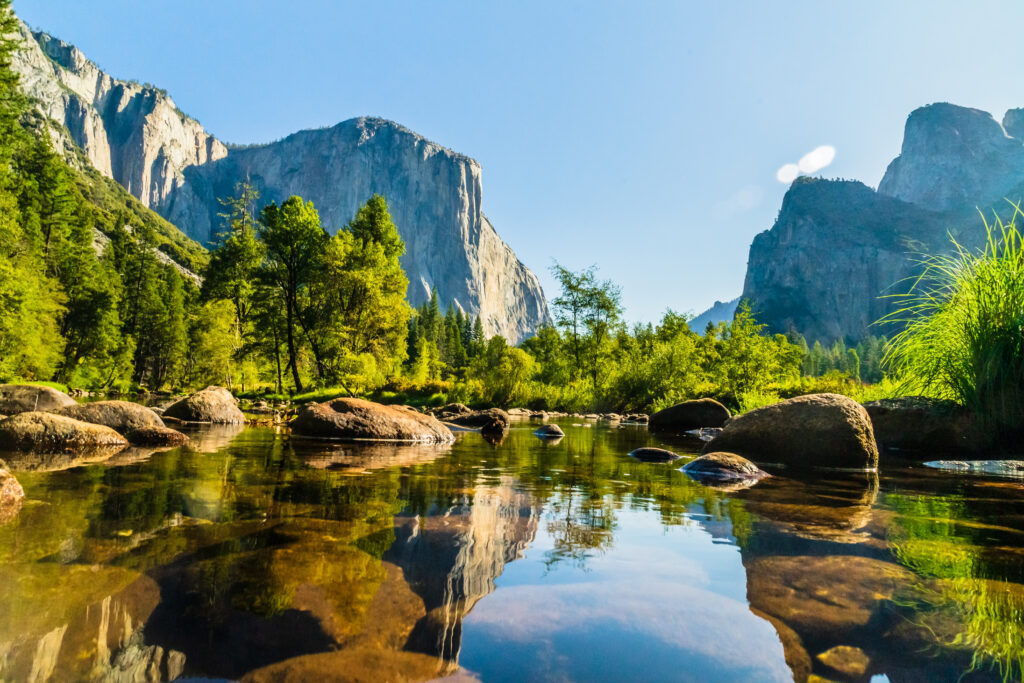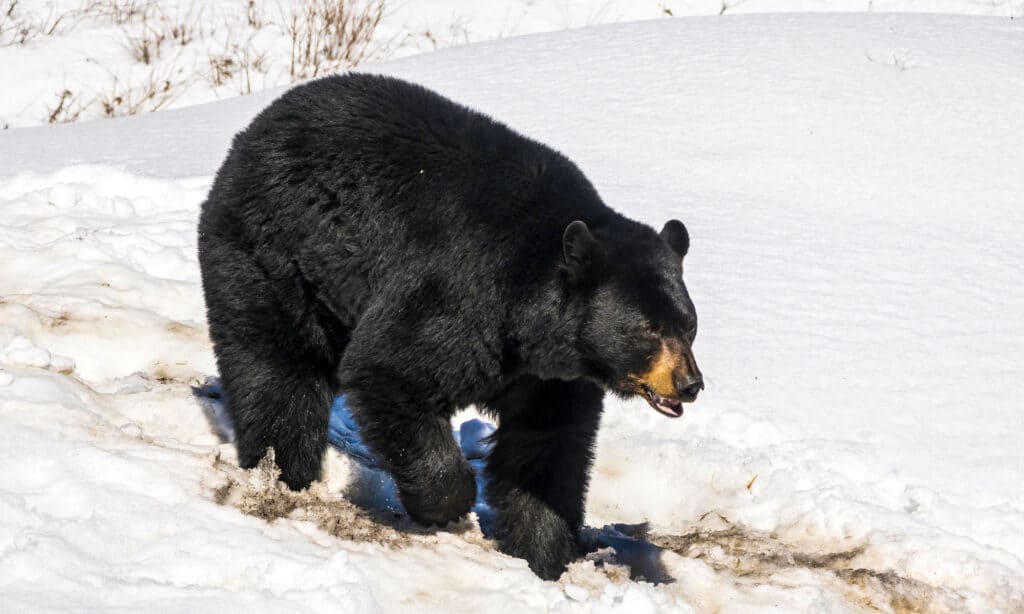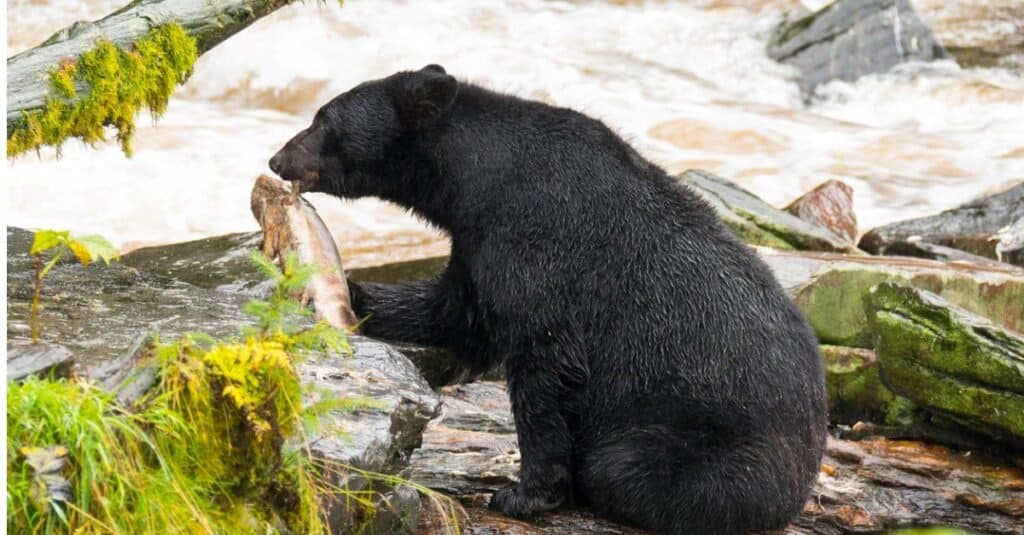Bears are a popular animal in Yosemite National Park. However, there are only about 300 to 500 in the park. Still, visitors are drawn to the park in hopes of seeing a bear. But where in Yosemite can you spot them? What do you do if you’re near a bear? Follow along to learn more about bears in Yosemite, including the best places to view them.
What is Yosemite National Park?
Before we talk about the bears in Yosemite, let’s discuss the national park. Yosemite National Park is a 759,620-acre national park in California. The nearest city is Mariposa, California. Yosemite National Park was established on October 1, 1890. Interestingly, the Yosemite National Park was protected long before the National Park Service was formed. This natural beauty sees over 3.6 million visitors every year. This national park is in the central Sierra Nevada of California. The park contains thousands of lakes and ponds. There are also at least 800 miles of hiking trails. Some of the most iconic features in the park are the Tunnel View, El Capitan, Sentinel Dome, Mount Gibbs, Kuna Crest, and Tuolumne Meadows.
The history of Yosemite National Park begins long before European colonization. It was home to the Ahwahneechee people, the only Native Americans to live within the park’s boundaries. However, many tribes nearby traveled to this area to trade. Sadly, during the California Gold Rush in 1848-1855, the population of Native Americans declined. Over 90,000 European settlers rushed over to participate, spreading diseases and thinning resources. Native Americans within the park’s boundaries were constantly relocated and harassed. In 1929 and 1969 the National Park Service destroyed Native American villages, driving them away.
What Bear Species Live in Yosemite?
While the word ‘Yosemite’ refers to grizzly bears, you won’t find them in the national park. Instead, this beautiful park is home to black bears. Previously, grizzly bears were plentiful in the park’s boundaries and the state. There may have been up to 10,000 at its peak. However, the last recorded grizzly bear in Yosemite National Park was shot in 1895. There haven’t been confirmed sightings of California grizzly bears since 1924. When tourism first grew, visitors feared bears and killed them to purposefully keep them out of the valley.
The last California grizzly in the state was killed in 1922 near Sequoia National Park. Grizzly bears are difficult to find. They are restricted to only 5% of their historic range. Still, while you won’t find a California grizzly in the national park, you may see a North American black bear.

North American black bears live in Yosemite National Park.
©iStock.com/TravelShotz
About North American Black Bears
North American black bears are the most spread out and highly populated bear species in North America. They are also one of the smallest bear species. American black bears adapt to new environments quickly. While they typically live in forested areas, they travel into neighborhoods looking for food. Black bears are also very smart! Continue reading to learn more about these amazing animals.

Black bears are very smart.
©Josef Pittner/Shutterstock.com
Size and Appearance
So, what do North American black bears look like? Although the color ‘black’ is in their name, North American black bears rarely have dark black fur. Instead, most North American black bears have brown or cinnamon-colored coats. Interestingly, some of these bears also develop a white crescent moon patch of fur on their chests. Although uncommon, some black bears are white or blonde. They also have large paws about 5.4 to 8.9 inches long. They also have small ears that sit at the back of their head. Even with such small ears though, these bears have excellent hearing.
Black bears are large animals, although they are one of the smallest bear species. They are about 47 to 79 inches long. Their weight varies depending on the season. Adult male black bears weigh between 126 and 551 pounds. Females weigh about a third less than males. Their weight also depends on the region. For example, black bears in Alaska weigh more than those in California, likely because they have access to large amounts of salmon. Although most black bears weigh less than 500 pounds, the largest recorded black bear weighed 902 pounds, but alive may have weighed as much as 1,100 pounds.
Diet
Despite their size and aggressive reputation, American black bears don’t consume a lot of meat. Instead, they are foragers and about 75% of their diet is vegetation. They eat a lot of hazelnuts, wild berries, and drupes. Although they can hunt for meat, they mainly consume carrion after hibernation. Black bears also consume insects like bees and ants. These fearless bears find bee nests in search of honey and consume the sweetness, even when getting stung. Depending on the region, black bears also consume salmon. However, they hunt at night since salmon spot dark fur easily.
Predators
Black bears don’t have a lot of competition. Most animals leave these large bears alone. Instead, the biggest black bear predator is humans. Although uncommon, black bears though are sometimes hunted by wolves, coyotes, mountain lions, and bobcats. Typically though, black bear cubs are at risk, not fully-grown adults. Black bears are calm and often don’t start fights without a reason. Still, if they are in danger, they will growl and puff up their chest, showing off their size. While black bears can bite, they’ve been recorded swatting the air toward humans as a warning. Black bears though have a strong bite force of up to 800 PSI. They are also very strong and can easily lift a 300-pound boulder with one paw.
Where to See Yosemite Bears
Black bears are scaredy cats. They mainly stay away from humans, but you have a good chance of seeing one in Yosemite National Park among oak trees and meadows. Since they don’t like being around humans, black bears live and travel in heavily wooded areas. They are more commonly spotted in early spring since they are hungry and awake from hibernation. A hungry black bear is dangerous and should never be fed!
Some of the best spots to potentially view black bears are Washburn Point, Roosevelt Point, Tenaya Canyon, Upper and Lower Pines Campgrounds, and Tuolumne Meadows. Although they’ve been spotted in these locations, there is no guarantee you’ll see one during your visit. They also change locations frequently based on the season. For example, to beat the heat in summer, black bears travel to high points in the park.

Black bears stay away from humans. You can find them in oak forests.
©iStock.com/ElliotHurwitt
What to Do if You See a Black Bear
Black bears aren’t as aggressive as grizzly or polar bears, but you shouldn’t mess with them! They are still wild animals that will protect themselves in any way possible. If you see a black bear in the wild and it’s close, don’t come closer or approach them. Instead, back away slowly looking for an exit. If the black bear has noticed you though, change your strategy. They don’t like fighting, especially larger animals. Make yourself look as big as possible by waving your arms in the air and shouting. Black bears have excellent hearing and may startle and run away.
It’s important to know that you should never run away from a bear or play dead. Black bears sometimes interpret running as a form of chasing. Although it’s tempting to want to climb a tree, don’t. Bears are great climbers. Bear attacks are rare, but if you find yourself in this situation, fight back with anything around you! If the bear is interested in food, walk away from the food quietly and sideways without letting your eyes leave. Although some national parks allow bear spray, Yosemite does not. As amazing as bears are, don’t encourage a bear to approach you! It can turn ugly in just a few seconds.
The photo featured at the top of this post is © Hulshof pictures/Shutterstock.com
Thank you for reading! Have some feedback for us? Contact the AZ Animals editorial team.







